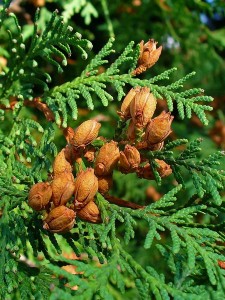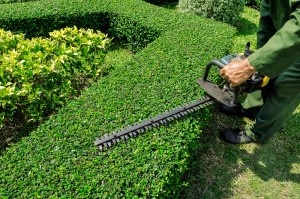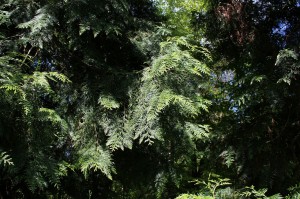 How should I care for my Arborvitae?
How should I care for my Arborvitae?
Arborvitae are one of the most commonly used landscape shrubs. These large shrubs/small evergreen trees are most typically used in hedges for screening. However, they are also used in a variety of fashions to provide vertical evergreen color in landscape design. As a landscape company that both performs tree planting well as performs landscape maintenance and tree services, we get our share of experiences with frustrated Arborvitae owners.
Identifying your tree helps you care for you Arborvitae
The most common and traditional variety of Arborivitae is Thuja occidentalis, the standard, garden variety Arborvitae. This was heavily used in the past 50 years until a new cultivar, ‘Emerald Green’ has been developed. The new cultivar is more commonly used now, because it stays tighter. It is also less prone to splitting from the weight of wet and snow-covered branches.
There is also another variety, and many property owners are unaware of it! Thuja plicata, the Green Giant Arborvitae resembles a typical evergreen tree rather than its hedge counterparts. Green Giants will also grow faster, in a conical fashion, and to a larger size.
What practices help me care for my Arborvitae?
Many of the issues and complaints that occur can be prevented if you know a few things about Arborvitae:
Plant at appropriate distances
Plants need room to develop a proper root system. If you are installing a hedge, you should plant these at a minimum of 3 ft. apart, but even go to 5-7 ft. if you can. More room for root systems will develop healthier trees. It may take longer for them to grow together, but it’s worth it in the long run. If you are planting Green Giants you should plant these at a minimum of 5 ft apart, but 10-15 ft is recommended.
Don’t let the hedge get taller than you need
Shearing hedges is labor intensive and can become more and more dangerous the taller the hedge gets. If your need is for an 8 ft. hedge, keep the hedge topped there every couple years. Pruning hedges on a regular basis will keep the tops looking nicer, as you will be only removing leafy growth, versus cutting large woody parts of the plant. Regular attention will reduce the chance of large cuts like this decaying at the top. If the task is too difficult or dangerous for you to perform find a tree trimming service to perform this for you.
 Shear lightly on a regular basis
Shear lightly on a regular basis
If you have concerns about the hedge getting wider than it should, shear it each year. This will remove only a small amount of green, leafy growth, but will keep you from hacking back into thinner parts of the Arborvitae. In some instances, light shearing will also encourage the hedge to grow fuller.
Make sure Arborvitae are irrigated, but not in wet soil
Most needled evergreen trees and shrubs don’t prefer wet soil. Be sure the place you install these plants will drain and water won’t lay there. However, they need their water. When drought conditions exist, water your trees and shrubs with soaker hoses to get moisture down 12″+ to the root system.
Treat for common pests, disease, and nutritional issues each year
Arborvitae face a variety of challenges with pests and disease. Pest problems include bagworms, scale, leafminers, and spider mites. Occasional disease issues such as tip blight can also occur. When plants are young or under stresses, it may also be a good idea to fertilize trees and shrubs on a regular basis. This is a great way to proactively care for arborvitae.
Conclusion
 If you are interested in having a landscape contractor install Arborvitae on your property, or concerned about how to maintain your trees and shrubs, we would love the opportunity to discuss what is best for you and your landscaping. We have both Certified Arborists and experienced landscape designers on staff that can help you learn how to know all you should about Arborvitae.
If you are interested in having a landscape contractor install Arborvitae on your property, or concerned about how to maintain your trees and shrubs, we would love the opportunity to discuss what is best for you and your landscaping. We have both Certified Arborists and experienced landscape designers on staff that can help you learn how to know all you should about Arborvitae.

